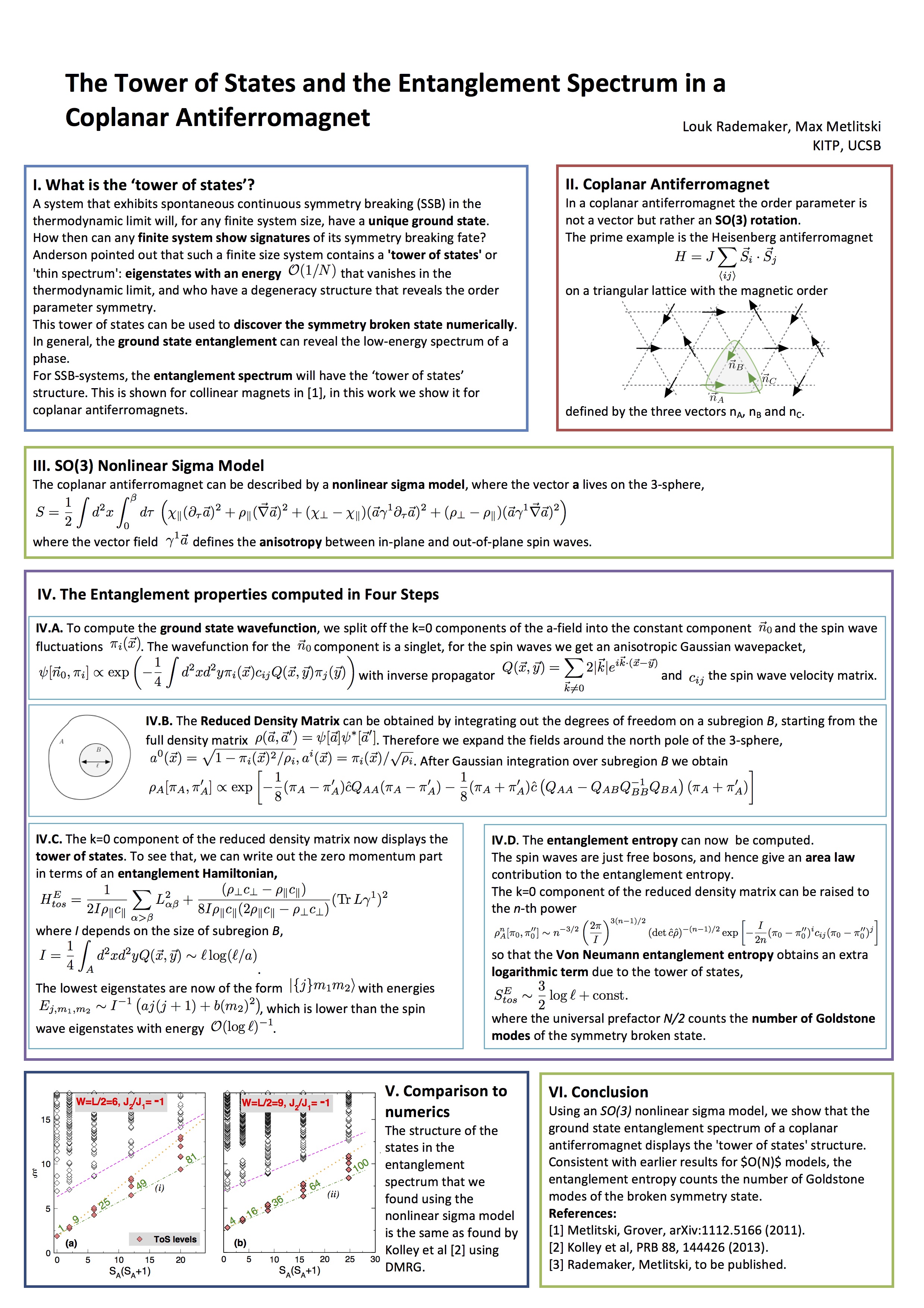This work was presented first in a seminar at the University of Toronto on 18 October 2017. The slides of this presentation can be downloaded here (pptx, 13 MB).
Title: Quenching the Kitaev honeycomb model
Author: Louk Rademaker
Abstract: I studied the non-equilibrium response of an initial Néel state under time evolution with the Kitaev honeycomb model. This time evolution can be computed using a random sampling over all relevant flux configurations. With isotropic interactions the system quickly equilibrates into a steady state valence bond solid. Anisotropy induces an exponentially long prethermal regime whose dynamics are governed by an effective toric code. Signatures of topology are absent, however, due to the high energy density nature of the initial state.




 At the KITP conference ‘
At the KITP conference ‘ At the
At the  From June 1 to June 5, 2015, the KITP hosted the conference ‘
From June 1 to June 5, 2015, the KITP hosted the conference ‘
